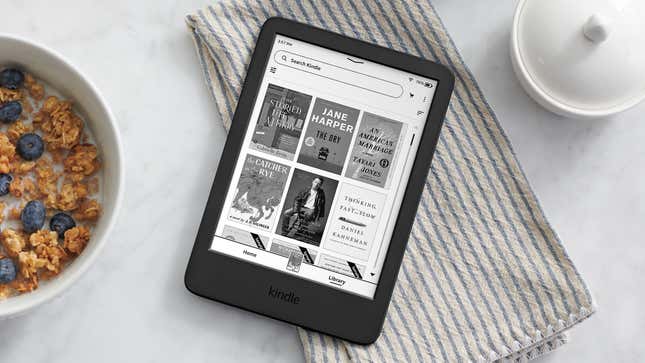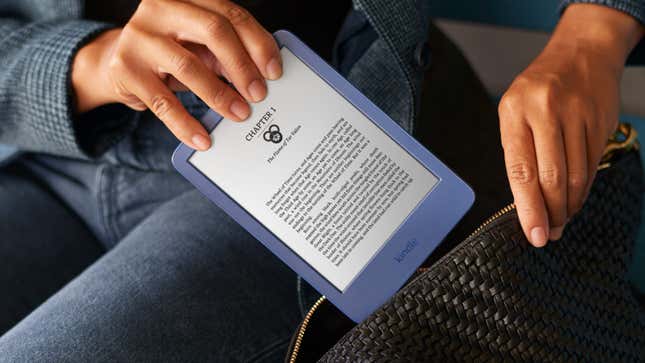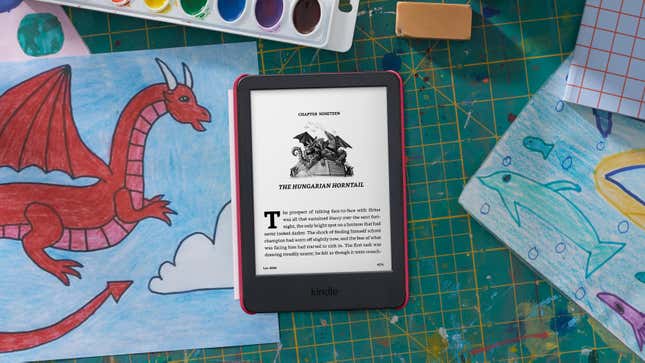
If all you really care about is reading, you don’t need to spend more than $100 on an e-reader. Amazon’s newest entry-level Kindle is even easier on the eyes, thanks to an an upgraded screen, but with a $100 starting price, it’s slightly more expensive than its $90 predecessor (thanks, pandemic!). It’s even pricier if you want to skip ads on the lock screen.
Two years ago, we recommended the $100 Kobo Nia as an alternative to the cheapest Kindle for those who weren’t keen on looking at ads every time they picked up their e-reader. At $90, the ad-supported Kindle was cheaper than the Kobo Nia (if you skipped Amazon’s Special Offers ads, that raised the price of the Kindle by another $20). But the Kobo Nia also boasted an E Ink display with a 212 pixel-per-inch (ppi) resolution, whereas the entry-level Kindle offered just 167 ppi, leaving text at smaller font sizes looking particularly pixelated.

Amazon has finally announced an update to its entry-level Kindle that brings with it a USB-C charging port, a bump from 8GB to 16GB of internal storage, six weeks of battery life per charge, black or denim (blue) color options instead of black or white, and a much better E Ink screen with a 300 ppi resolution—the same screen resolution featured in Amazon’s higher-end Kindles—that will make small text appear more crisp and individual pixels almost impossible to see with the naked eye.
However, what’s still missing from the new entry-level Kindle are color temperature adjustments for the screen lighting. Like its predecessor, it illuminates its E Ink screen with a cool glow from a strip of LEDs for reading when there’s not enough ambient light to see the display. But unlike on recent Paperwhite models, you can’t switch the lighting to a warmer hue for when you’re reading later at night and you don’t want to stare at blue light.
The Kobo Nia has the same limitation, which means that, at least for now, screen lighting temperature adjustments aren’t a feature you’re going to find on a sub-$100 e-reader. And while the new Kindle starts at $100, that’s for the lockscreen ad-supported option, if you don’t want ads, the price is $120 instead. Both options are $10 pricier than their predecessors, but for a limited time, Amazon is throwing in a four-month subscription to Kindle Unlimited—which is twice as long as the usual trial period.

Alongside the updated Kindle, Amazon is also releasing a new version of the Kindle Kids, which brings with it all of the same hardware upgrades, including USB-C charging, better battery life, extra storage space, and a 300 ppi E Ink screen. It also comes with one of three different covers, with either a Space Whale, Unicorn Valley, or Ocean Explorer design, as well as a one-year subscription to Amazon Kids+. That plan provides access to thousands of books, plus other kid-friendly content.
Unlike the standard Kindle, the Kindle Kids also gives parents access to a dashboard where they can set up reading schedules and limit access to content past bedtimes, plus allow kids to request content such as new ebooks without them being able to outright buy it themselves: a welcome limitation in a time of rampant micro-transactions.
The Kindle Kids e-reader is only available in a single $120 version without any lock screen ads. That’s $10 more than the previous version, but the upgraded screen, battery life, and storage all seem to justify the price bump.

